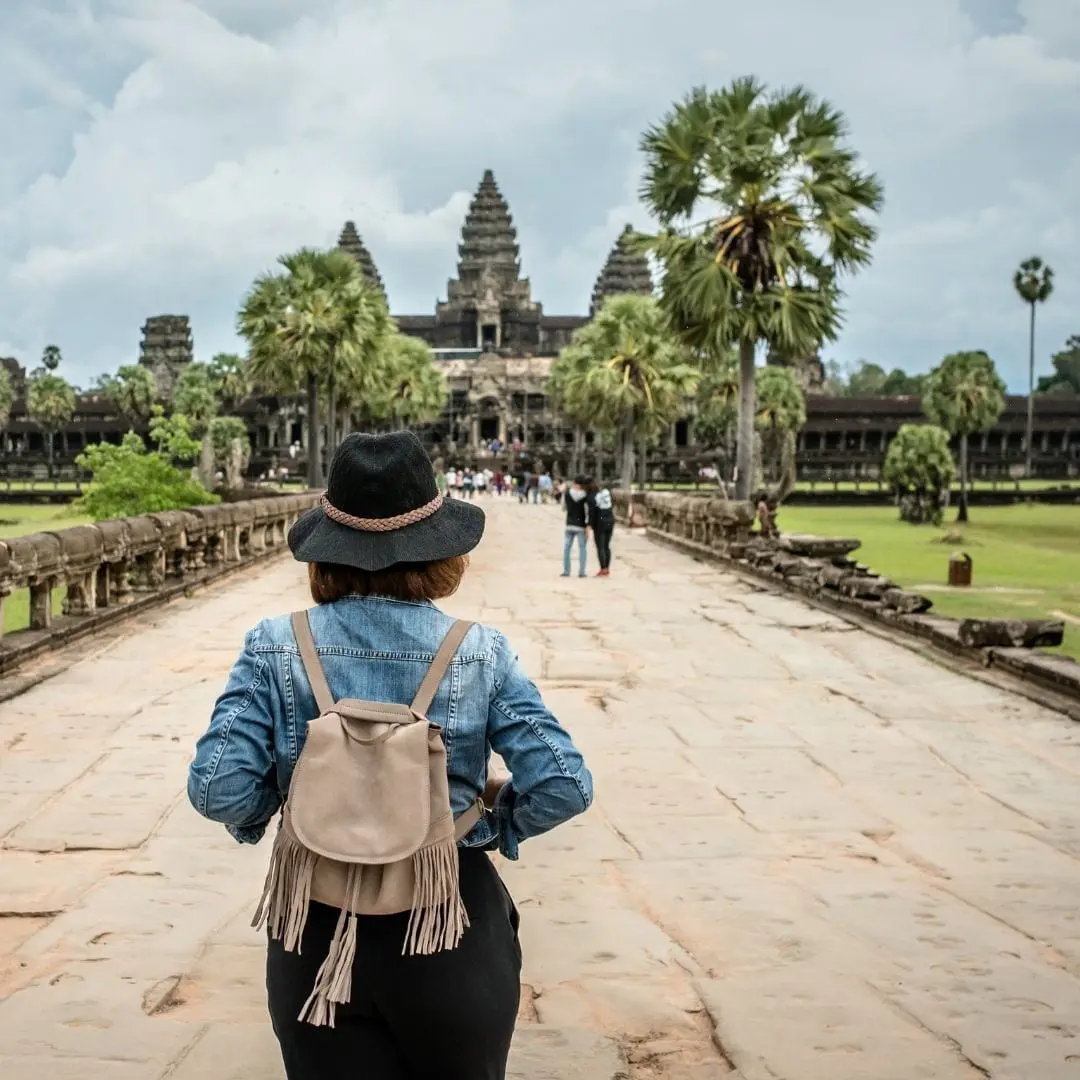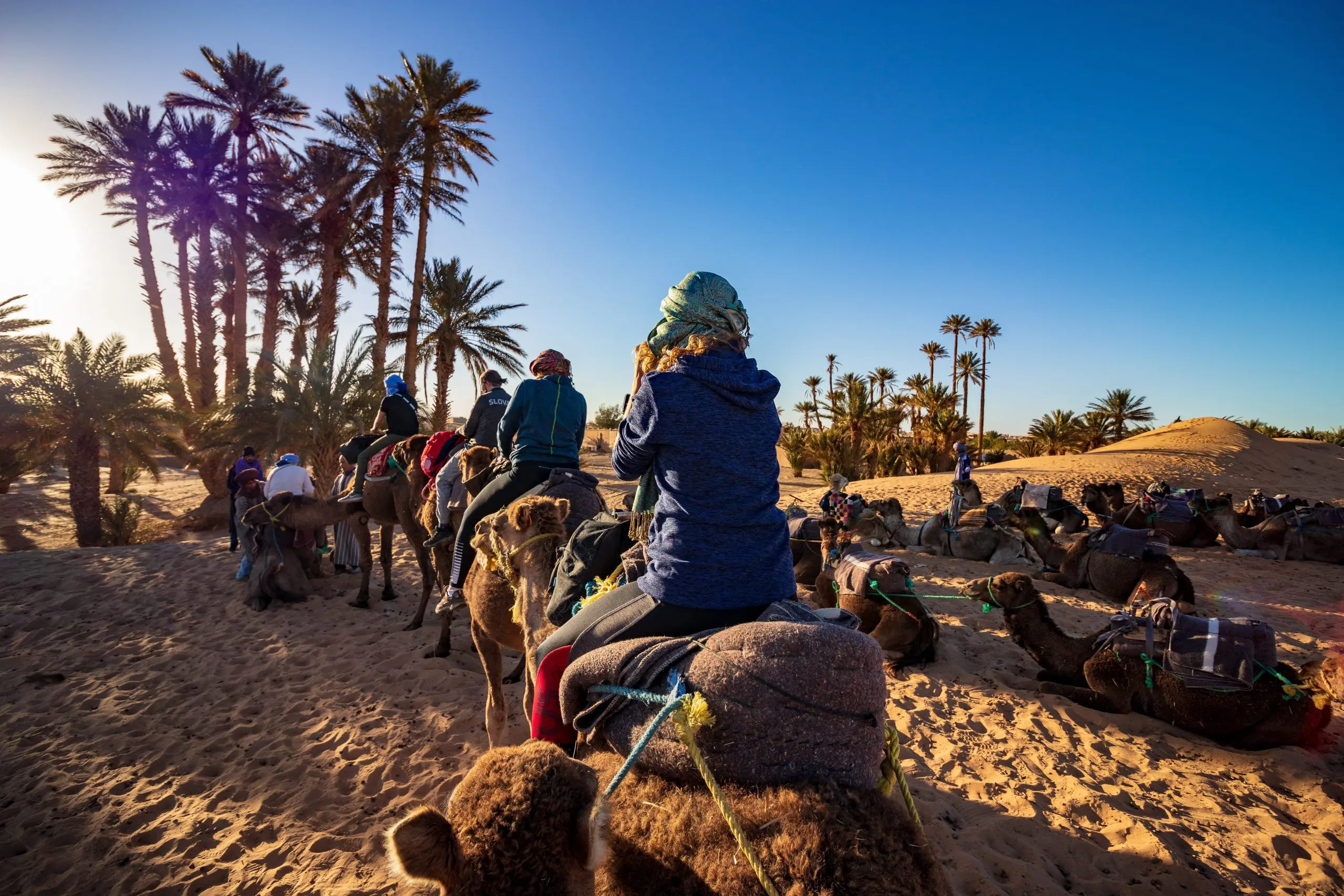Estimated reading time: 10 minutes
Exploring the temples of Angkor is a journey into the heart of ancient Khmer civilization, offering travelers a chance to witness breathtaking architecture and intricate artistry. Situated near Siem Reap, these temples are among the most significant archaeological sites in Southeast Asia. This guide highlights ten top temples in Angkor, providing tips on how to visit and make the most of your adventure.
As we introduce these marvelous temples of Cambodia, we also share the experiences of our travelers who enjoyed them first-hand.
A Brief History of Angkor
The Angkor temple complex encompasses over 1,000 temples, ranging from small ruins to the magnificent Angkor Wat, the largest religious monument in the world. The complex was initially founded by King Jayavarman II.
It saw its zenith under King Suryavarman II, who built Angkor Wat in the early 12th century as a Hindu temple dedicated to Vishnu. Later, it transitioned to a Buddhist site under King Jayavarman VII, who constructed other iconic structures like the Bayon and Ta Prohm.
Here are top temples of Angkor according to our travelers:
1. Angkor Wat

The crown jewel of the temples of Angkor is undoubtedly Angkor Wat, the biggest temple in Cambodia and a symbol of national pride. Built in the early 12th century by King Suryavarman II, this massive structure was initially dedicated to the Hindu god Vishnu before becoming a Buddhist temple.
Best visited at sunrise, the reflection of the Angkor Wat temple in Cambodia in the nearby moat is a sight to behold.
Where is Angkor Wat located?
Angkor Wat is located near the town of Siem Reap in the northwestern part of Cambodia. This iconic temple complex is part of the larger Angkor Archaeological Park, which spans over 400 square kilometers.
The park is easily accessible from Siem Reap, making it the primary base for you if you wish to explore the temples of Angkor.
How old is Angkor Wat?
Angkor Wat is approximately 900 years old. It was built in the early 12th century, specifically during the reign of King Suryavarman II, who ruled from 1113 to 1150 AD.
This makes the temple complex nearly nine centuries old.
2. Bayon Temple

Famous for its enigmatic smiling faces, Bayon is located in the center of Angkor Thom.
The Bayon Cambodia temples are unique due to their 54 towers adorned with 216 faces, believed to represent the Avalokiteshvara, the Buddha of Compassion.
Visit early in the morning or late afternoon for the best lighting and fewer crowds.
Unique Angles: Explore different angles and perspectives to capture the enigmatic faces. The upper terrace offers excellent vantage points.
3. Ta Prohm

Known as the “Tomb Raider Temple” because of its appearance in the Angelina Jolie movie, Ta Prohm is a must-see Siem Reap temple.
You have probably seen it before—Giant trees and their roots intertwine with the ruins, creating a surreal, otherworldly atmosphere.
Early morning visits are recommended to enjoy this popular site in relative tranquility.
4. Banteay Srei

This Angkor temple is located about 25 kilometers from the main Angkor complex.
Banteay Srei is often referred to as the “Citadel of Women” due to its delicate carvings and pink sandstone construction. This temple is renowned for its intricate details and well-preserved art, making it a favorite among our travelers.
Fun fact, the temple is constructed from pink sandstone. This allows for the intricate and highly detailed carvings that have remained remarkably well-preserved over the centuries.
5. Angkor Thom

Angkor Thom, meaning “Great City,” was the last and most enduring capital city of the Khmer Empire. Within its walls are several significant temples, including Bayon, Baphuon, and Phimeanakas.
The imposing South Gate, adorned with giant statues, is a spectacular introduction to this historical site.
If you are visiting Angkor Thom, we highly recommend considering these three tips:
- Avoid Crowds and Heat: Angkor Thom can get quite crowded and hot during the middle of the day. To avoid the crowds and enjoy cooler temperatures, plan to visit early in the morning.
- Consider reading up on the history and significance of Angkor Thom before your visit, even if you have a guide.
- We know that Bayon and the Terrace of the Elephants are must-see highlights. But, don’t miss out on exploring some of the lesser-known areas such as Phimeanakas, the Royal Palace, and the Preah Palilay temple.
6. Preah Khan

Built by King Jayavarman VII, Preah Khan is a sprawling monastic complex that served as a Buddhist university and monastery.
The temple is a maze of corridors and courtyards, with trees and vegetation reclaiming parts of the structure. It’s less crowded than other main temples, offering a peaceful exploration.
Here is a lesser-known hack for visiting Preah Khan: Bring a Flashlight. Preah Khan is known for its maze-like corridors and darker interior spaces. Bringing a flashlight can help you navigate these areas more safely and allow you to appreciate the detailed carvings and hidden corners.
7. Ta Som

Ta Som is a smaller temple but equally enchanting, known for the giant strangler fig tree that engulfs its eastern gate. This temple provides a more intimate and serene experience.
An incredible hack for visiting to Ta Som, thanks to our fellow travelers, is a fascinating spot in the temple. Explore the iconic eastern gopura (gateway) where a giant strangler fig tree has dramatically overgrown the structure.
Bonus Tip:
Don’t Miss the Rear Entrance: While the main entrance is impressive, make sure to exit through the rear entrance of the temple. This will lead you to the famous tree-enveloped gate.
8. Baphuon

Situated within Angkor Thom, Baphuon is a towering temple mountain dedicated to Shiva. It features a long causeway and a massive reclining Buddha on its western side, which was added in the 16th century.
Climbing to the top offers a panoramic view of the surrounding area.
9. Pre Rup

Pre Rup, meaning “turning the body,” was built as a state temple by King Rajendravarman in the 10th century.
The temple is constructed with laterite and brick, giving it a warm, reddish hue, especially striking at sunset. Its central tower and surrounding smaller towers are a testament to ancient Khmer architectural prowess.
Pre Rup’s meaning is beyond what is seen. The name “Pre Rup” translates to “turning the body,” which is believed to be associated with the ancient Khmer practice of cremation. The temple’s structure and layout were thought to be used for funerary rituals, symbolizing the cremation process and the transformation of the deceased into the next life.
Best Time to Visit: The temple is particularly popular at sunset due to its elevated position and the warm hues of its stone.
10. East Mebon

East Mebon, built in the 10th century, originally stood on an artificial island in the middle of the now-dry East Baray reservoir.
The temple is notable for its well-preserved elephant statues and intricate carvings, offering a glimpse into the irrigation prowess of the Khmer Empire.
Tips for Visiting the Temples of Angkor

Getting Your Angkor Pass
To visit the temples of Angkor, you need to purchase an Angkor Pass. Options include a one-day, three-day, or seven-day pass, available at the official ticket office. The three-day pass is ideal for a more in-depth exploration without feeling rushed.
Best Time to Visit
The best time to visit the temples of Cambodia is during the cool, dry season from November to February. The weather is more comfortable, though it’s also the peak tourist season. For fewer crowds, consider visiting during the shoulder months of October and March.
Staying Hydrated and Prepared
Exploring the temples involves a lot of walking, often under the sun. Wear comfortable shoes, carry water, apply sunscreen, and wear a hat to protect yourself from the heat.
- Read more about our traveler Rebecca’s experience visiting the temples of Angkor for the first time.
FAQ about the Temples of Angkor
When visiting, you need to adhere to several important rules. These include dressing modestly, with covered shoulders and knees, not touching or climbing on the ruins. You can take photos, but you cannot fly drones without special permission.
Yes, you can visit Angkor Wat on your own. Many travelers choose to explore independently, using guidebooks or audio guides to learn about the site’s history and significance. However, hiring a local guide can enhance the experience by providing detailed insights.
No, you cannot visit Angkor Wat for free. Access to Angkor Wat and the surrounding temples within the Angkor Archaeological Park requires purchasing an Angkor Pass. There are different pass options available: a one-day pass, a three-day pass, and a seven-day pass, with prices varying accordingly.
 March Sale; 2 For 1
March Sale; 2 For 1  Croatia Sailing : 2 For 1
Croatia Sailing : 2 For 1 Asia Tours : 2 For 1
Asia Tours : 2 For 1 Central & Eastern Europe Tours: 2 For 1
Central & Eastern Europe Tours: 2 For 1  Why Travel Talk
Why Travel Talk Travel Talk Blog
Travel Talk Blog Responsible Travel
Responsible Travel Fair Travels with Travel Talk
Fair Travels with Travel Talk